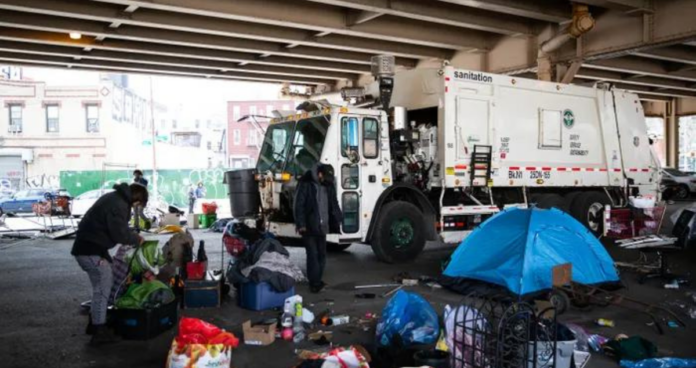This winter, NYC Mayor Eric Adams announced a new plan to forcibly hospitalize people living on the streets, even if they don’t want to go. California and Oregon are also considering similar moves to hospitalize and institutionalize homeless people, under pressure to “deal with” an increasingly visible homeless population.
While many people living on the streets have persistent mental health problems, approximately 30% of NYC’s homeless population, forced institutionalization is not likely to help. Institutionalization often means being stripped of most of one’s rights to autonomy – loss of custody of any children or pets and forfeiting many of your legal rights. Additionally, those who don’t meet the bar for institutionalization will cycle in and out of NYC emergency rooms at even higher rates, putting increased strain on healthcare workers.
In the four years prior to COVID-19, homelessness had been growing 2% nationally per year, fueled by rising rents. It’s unclear what effect COVID-19 has had on homelessness rates nationwide because the chaos of the pandemic disrupted the processes used to estimate homeless populations. But the math doesn’t look good.
Despite national and local moratoriums lessening the blow, 1.7 million evictions have been filed since March of 2020. At the same time, capacity at most shelters was slashed in order to reduce transmission of the disease, and climate change has continued to fuel extreme weather conditions – leading to a situation where it is more and more deadly to be living outside.
This crisis, and the faux solutions presented by the political establishment, is the byproduct of a system where housing only gets more and more expensive. While politicians point to a “housing shortage,” the reality is that there are 22 million vacant homes in the United States – even accounting for homes that are not in a fit state to live, that’s plenty to house everyone currently living on the streets or in shelters.
But there’s no profit to be made from reallocating this housing towards meeting the needs of society – so instead city governments sweep homeless people from temporary shelter to temporary shelter. We need sensible allocation of existing vacant housing, massive public investment in building high-quality permanently-affordable social housing, and ultimately, an end to the system of profit that commodifies basic necessities like housing.


